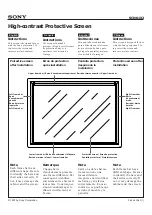
Introducing BrilliantColor™ Technology
David C. Hutchison, Texas Instruments, DLP
®
Products
Abstract
This white paper will discuss Texas
Instruments BrilliantColor™ technology.
This technology uses innovations in image
processing to improve the optical efficiency
of DLP® projection systems while
expanding the capability of current RGB
color wheels. BrilliantColor™ technology
may also be combined with new color wheel
designs that can expand beyond traditional
3-color systems, enabling the utilization of
wide color gamuts on DLP display systems.
The combined effect is that the Original
Equipment Manufacturer (OEM) now has
the opportunity to provide a brighter display
that utilizes a customized color gamut that is
not available on competing technologies.
Introduction
Historically, most display devices would
render a scene using the three primary
colors, red, green, and blue. The
combination of these three colors allows one
to display any color that is within the
triangular region bounded by those three
colors (reference Figure 1). This limits
available colors that can be displayed,
Figure 1 -- Color Gamut of a Typical Television or
Projector
making it difficult to display brilliant
yellows and cyans that are commonly found
in natural scenes.
The color gamuts typically found on all
current consumer display systems trade off
having a wide color gamut with brightness.
One can increase the size of the color gamut
by increasing the saturation of the primaries.
Saturated primaries move the red, green, and
blue points of the triangle closer to the edge
of the visible color spectrum and cover a
greater area of the visible color spectrum.
Because the saturated primaries typically are
not as bright, the use of saturated primaries
reduces the overall brightness of white tones
and saturated colors. By adding yellow,
cyan, and magenta colors to the rendering of
the image, one can maintain bright white
points while providing deeper red, green,
and blue color points.
The three color gamut has been used
quite successfully for the Cathode Ray Tube
(CRT) color displays. The first DLP®
display systems also utilized a similar
approach whereas the image is split into its
red, green, and blue components for display
on the digital micro-mirror device (DMD).
Factors Impacting Display Brightness
There are several factors that affect the
end brightness of the display in lamp based
display systems. A typical DLP® Display
optical path is shown in Figure 2.
Figure 2 – DLP® Optical Path
Integrator Rod
Relay Lenses
Lamp
TIR Prism
DMD
Projection Lens
Color Wheel
Screen
2























